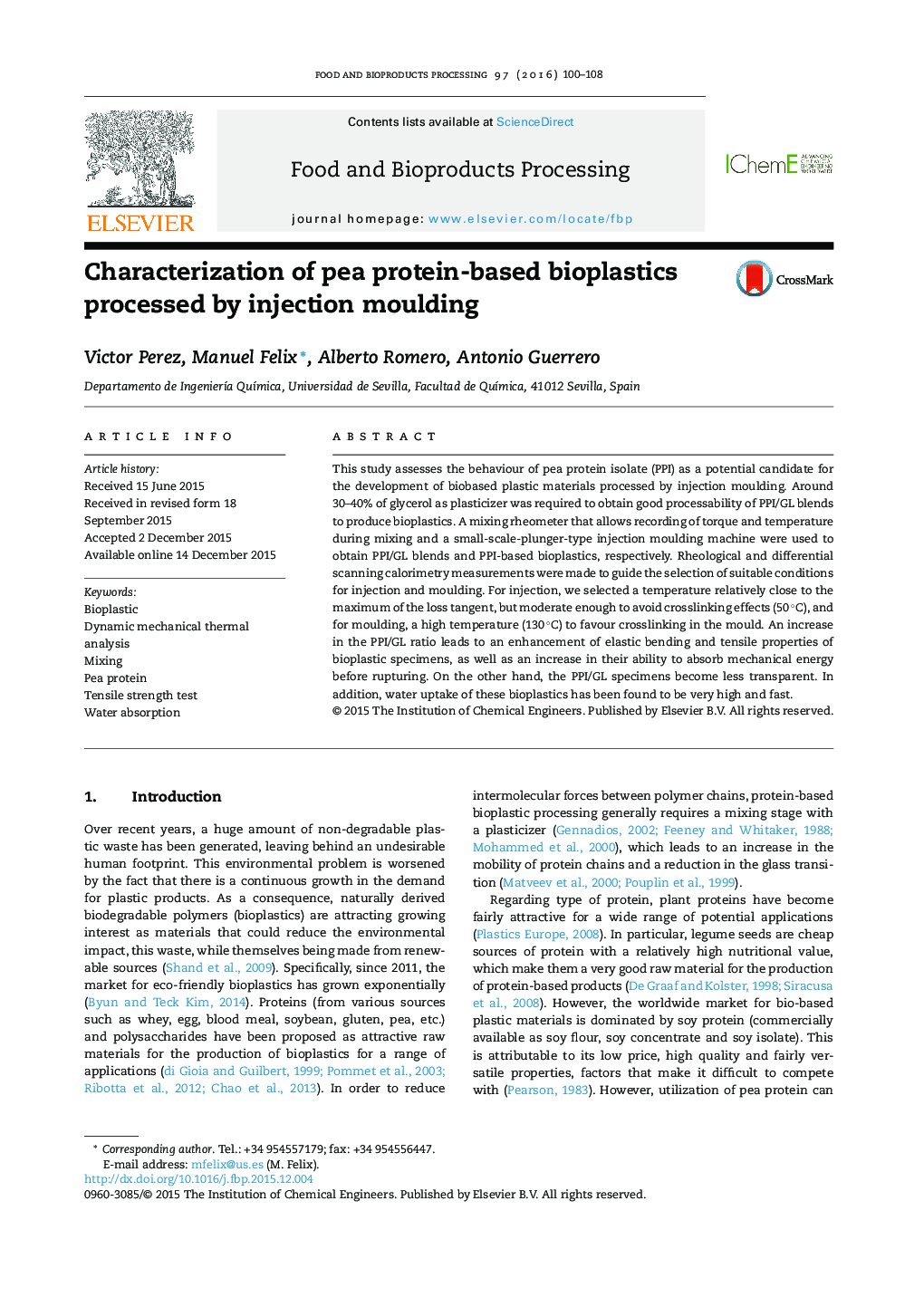| کد مقاله | کد نشریه | سال انتشار | مقاله انگلیسی | نسخه تمام متن |
|---|---|---|---|---|
| 19046 | 43042 | 2016 | 9 صفحه PDF | دانلود رایگان |
• Pea protein is a highly denatured protein as revealed by its low solubility.
• A proportion of 30–40% glycerol is optimum for improving bioplastic processability.
• An increase in glycerol content induces a lower glass transition temperature (Tg).
• Higher protein content produces a higher Young's Modulus and lower transparency.
This study assesses the behaviour of pea protein isolate (PPI) as a potential candidate for the development of biobased plastic materials processed by injection moulding. Around 30–40% of glycerol as plasticizer was required to obtain good processability of PPI/GL blends to produce bioplastics. A mixing rheometer that allows recording of torque and temperature during mixing and a small-scale-plunger-type injection moulding machine were used to obtain PPI/GL blends and PPI-based bioplastics, respectively. Rheological and differential scanning calorimetry measurements were made to guide the selection of suitable conditions for injection and moulding. For injection, we selected a temperature relatively close to the maximum of the loss tangent, but moderate enough to avoid crosslinking effects (50 °C), and for moulding, a high temperature (130 °C) to favour crosslinking in the mould. An increase in the PPI/GL ratio leads to an enhancement of elastic bending and tensile properties of bioplastic specimens, as well as an increase in their ability to absorb mechanical energy before rupturing. On the other hand, the PPI/GL specimens become less transparent. In addition, water uptake of these bioplastics has been found to be very high and fast.
Journal: Food and Bioproducts Processing - Volume 97, January 2016, Pages 100–108
